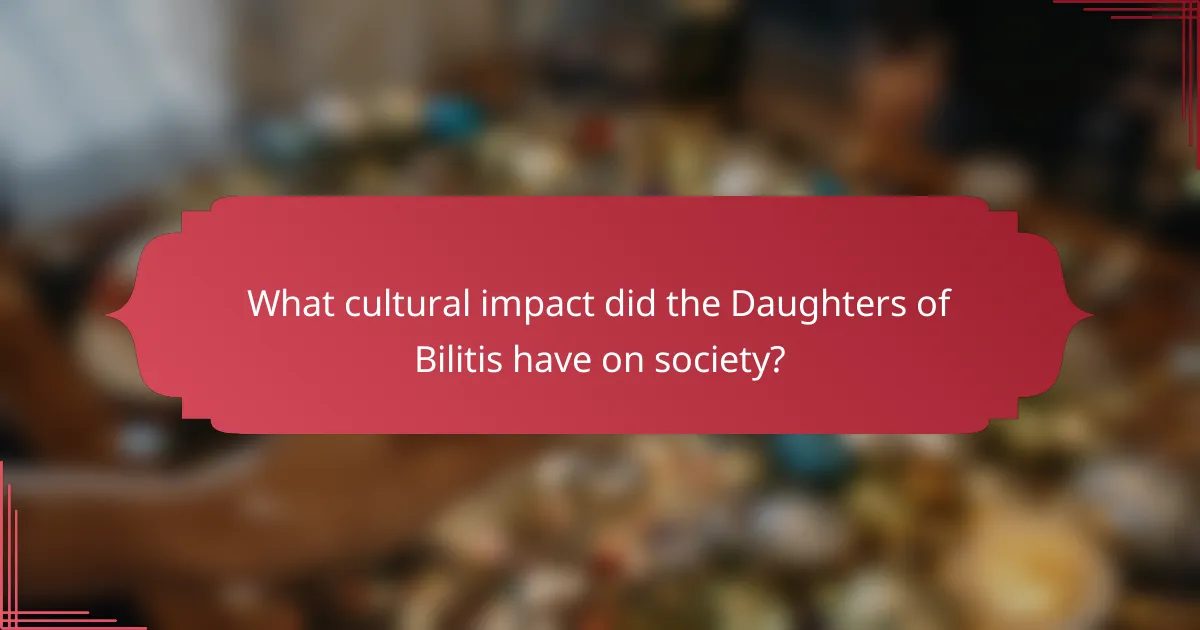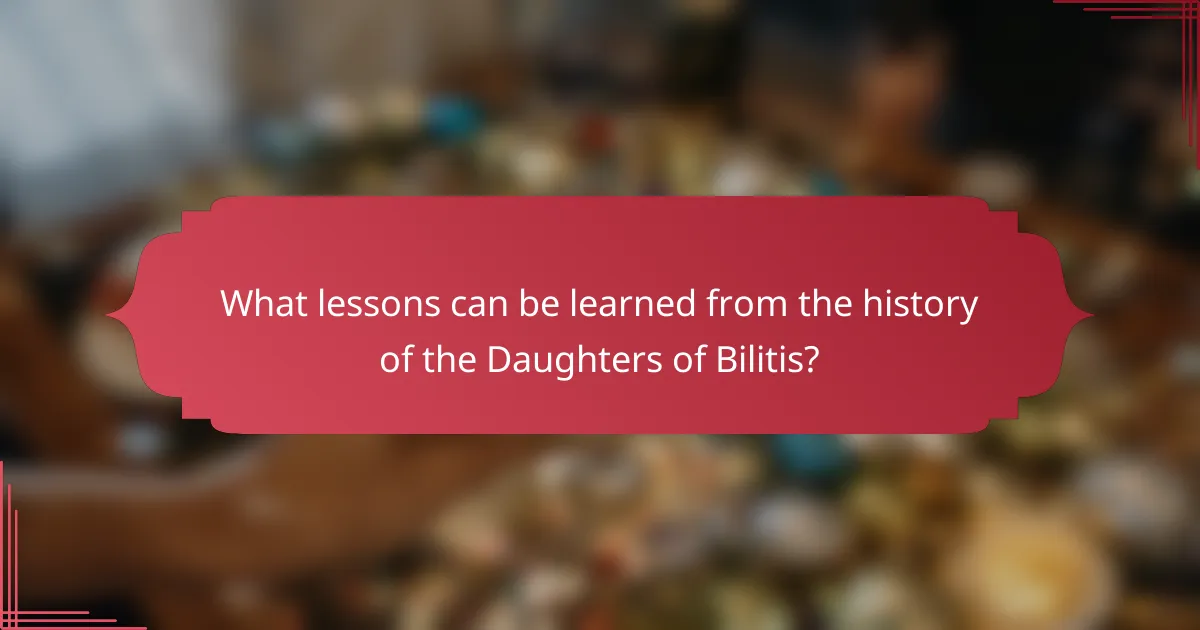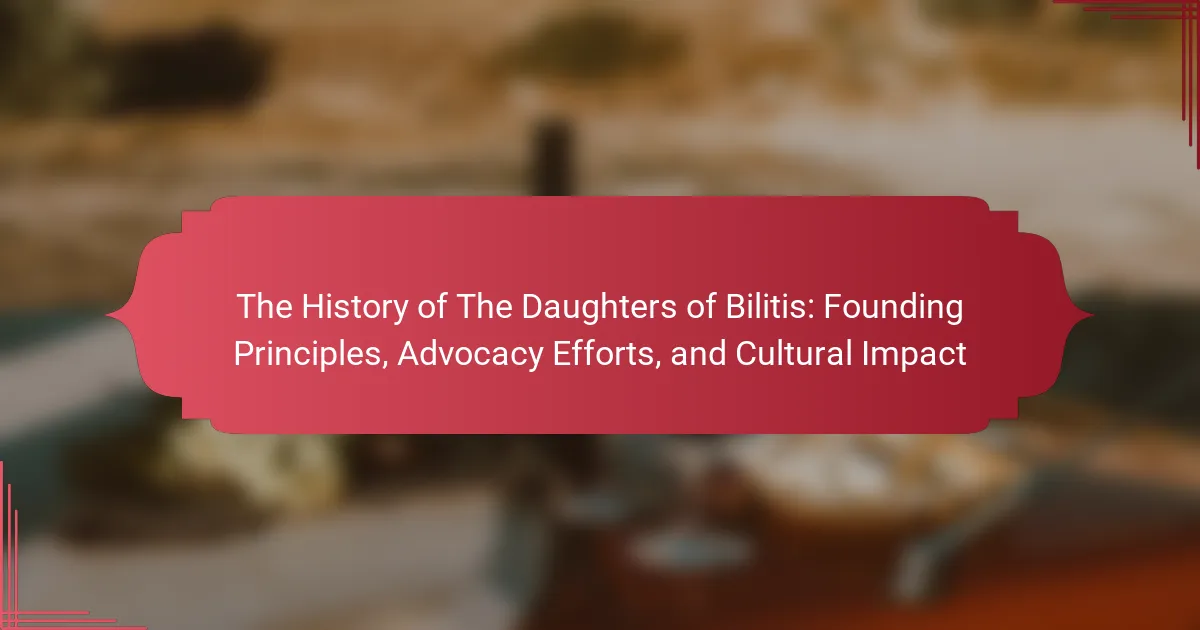![What are the Daughters of Bilitis and their significance in [censured] history?](/wp-content/uploads/what-are-the-daughters-of-bilitis-and-their-significance-in-censured-history-1.webp)
What are the Daughters of Bilitis and their significance in [censured] history?
The Daughters of Bilitis were the first lesbian civil and political rights organization in the United States. Founded in 1955 in San Francisco, they aimed to create a social and political space for lesbians. The group provided support, education, and advocacy for women’s rights within the [censured] community. They published a magazine called “The Ladder,” which became a vital platform for lesbian voices. The Daughters of Bilitis played a significant role in raising awareness about lesbian issues and combating discrimination. Their efforts laid the groundwork for future [censured] activism and organizations. They are recognized for their pioneering work in the fight for equality and representation.
How did the Daughters of Bilitis come to be founded?
The Daughters of Bilitis were founded in 1955 in San Francisco. They emerged as the first lesbian civil and political rights organization in the United States. The founders, including Del Martin and Phyllis Lyon, sought to create a safe space for lesbians. They aimed to provide support and education about lesbian identity. The organization began as a social club, but quickly expanded its focus to advocacy. They published a newsletter called “The Ladder” to discuss issues affecting lesbians. The Daughters of Bilitis played a crucial role in the early [censured] rights movement. Their founding marked a significant step toward visibility and equality for lesbians in America.
Who were the key figures involved in the founding of the Daughters of Bilitis?
The key figures involved in the founding of the Daughters of Bilitis were Del Martin and Phyllis Lyon. Del Martin and Phyllis Lyon co-founded the organization in 1955. They aimed to create a support network for lesbians. Their efforts were pivotal in establishing a sense of community. The Daughters of Bilitis became the first lesbian civil and political rights organization in the United States. Martin and Lyon were also influential in advocating for [censured] rights. Their work laid the groundwork for future activism. The organization helped to raise awareness about lesbian issues.
What were the initial goals and objectives of the organization?
The initial goals and objectives of the Daughters of Bilitis were to provide support and community for lesbians. The organization aimed to combat social stigma and discrimination faced by lesbians in the 1950s. They sought to educate the public about lesbian issues and promote acceptance. The group also focused on fostering a sense of identity and pride among its members. Their objectives included advocating for the rights of lesbians and raising awareness of their experiences. This foundation laid the groundwork for future [censured] activism. The Daughters of Bilitis played a crucial role in the early [censured] rights movement.
What founding principles guided the Daughters of Bilitis?
The founding principles that guided the Daughters of Bilitis focused on education, advocacy, and community building for lesbians. They aimed to provide a safe space for women to discuss their experiences and challenges. The organization sought to combat societal stigma and promote understanding of lesbian identities. They emphasized the importance of political activism to achieve equal rights. The Daughters of Bilitis also prioritized creating resources for lesbians, including newsletters and social events. Their commitment to fostering solidarity among women was foundational to their mission. These principles were crucial in shaping the early lesbian rights movement in the United States.
How did these principles reflect the societal context of their time?
The principles of the Daughters of Bilitis reflected the societal context of their time by advocating for [censured] rights in a period of widespread discrimination. Founded in the 1950s, the organization emerged during a time when homosexuality was criminalized and stigmatized in the United States. Their focus on education and support for lesbian women highlighted the need for community in a hostile environment. The principles emphasized self-acceptance and the importance of visibility, which were crucial for challenging societal norms. During the mid-20th century, the fight for civil rights was gaining momentum, and their advocacy paralleled broader movements for social justice. The Daughters of Bilitis’ efforts contributed to the gradual shift in public perception regarding [censured] individuals. Their work laid the groundwork for future activism, aligning with the evolving cultural landscape of the 1960s and beyond.
In what ways did the founding principles evolve over time?
The founding principles of the Daughters of Bilitis evolved from a focus on personal support to broader social advocacy. Initially, the organization aimed to provide a safe space for lesbians in the 1950s. Over time, their focus expanded to include civil rights and social justice issues. The shift was influenced by the changing cultural landscape and the rise of the feminist movement. By the 1970s, the Daughters of Bilitis actively participated in [censured] rights activism. Their principles adapted to address intersectional issues, including race and class. This evolution reflected a response to the growing visibility of [censured] individuals in society. The organization ultimately contributed to the foundation of more inclusive advocacy efforts within the community.
What advocacy efforts did the Daughters of Bilitis undertake?
The Daughters of Bilitis undertook advocacy efforts focused on [censured] rights and visibility. They aimed to combat discrimination and promote acceptance of lesbian identities. The organization published a newsletter called “The Ladder,” which provided information and resources for the lesbian community. They organized social events to foster community and support among lesbians. The Daughters of Bilitis also engaged in public education campaigns to raise awareness about lesbian issues. They participated in early [censured] rights demonstrations, advocating for legal reforms. Their efforts contributed to the broader [censured] rights movement in the 1960s and 1970s. The Daughters of Bilitis played a pivotal role in establishing a sense of community and identity for lesbians during a time of significant societal stigma.
What specific issues did they address in their activism?
The Daughters of Bilitis addressed issues related to [censured] rights and social acceptance. They focused on combating discrimination against lesbians. Their activism aimed to promote visibility and representation in society. The group advocated for legal rights and protections for [censured] individuals. They also worked to educate the public about homosexuality. The Daughters of Bilitis published newsletters to raise awareness. Their efforts contributed to the early [censured] rights movement in the United States. The organization played a crucial role in fostering community and support among lesbians.
How did their advocacy strategies influence public perception of [censured] rights?
The advocacy strategies of the Daughters of Bilitis significantly influenced public perception of [censured] rights. They utilized education and outreach to raise awareness about [censured] issues. Their publication, “The Ladder,” provided a platform for discussion and visibility. By promoting social events, they fostered community solidarity and support. Their focus on personal narratives humanized [censured] experiences for the broader public. This approach countered stereotypes and misconceptions prevalent in society. Research shows that their efforts contributed to increased acceptance of [censured] individuals in the 1960s. Their advocacy laid groundwork for future movements, shaping public discourse around [censured] rights.

What cultural impact did the Daughters of Bilitis have on society?
The Daughters of Bilitis significantly influenced societal perceptions of lesbian identity. Founded in 1955, they were the first lesbian civil and political rights organization in the United States. This group provided a safe space for women to discuss their experiences and issues. They published a magazine called “The Ladder,” which educated the public about lesbianism. Their activism contributed to the visibility of lesbian issues in the broader civil rights movement. The Daughters of Bilitis challenged stereotypes and promoted acceptance. They laid the groundwork for future [censured] advocacy organizations. Their efforts helped shift societal attitudes toward greater acceptance of diverse [censured] orientations.
How did the Daughters of Bilitis contribute to the visibility of lesbian identities?
The Daughters of Bilitis significantly increased the visibility of lesbian identities through advocacy and community-building. Founded in 1955, they were the first lesbian civil and political rights organization in the United States. The group published “The Ladder,” a monthly magazine that provided a platform for lesbian voices and issues. This publication helped educate the public about lesbian experiences and fostered a sense of community. The Daughters of Bilitis organized social events and meetings, creating safe spaces for lesbians to connect. Their efforts challenged societal norms and contributed to the broader [censured] rights movement. By providing visibility, they laid the groundwork for future activism and acceptance of lesbian identities.
What role did publications like ‘The Ladder’ play in their cultural impact?
Publications like ‘The Ladder’ served as crucial platforms for [censured] visibility and advocacy. They provided a voice for the lesbian community during a time of widespread discrimination. ‘The Ladder’ offered a space for sharing personal stories, fostering a sense of community. It featured articles on social issues, health, and literature relevant to lesbians. The publication also helped to educate the broader public about [censured] lives and experiences. By doing so, it challenged societal norms and stereotypes. ‘The Ladder’ was one of the first publications to promote lesbian rights and identity openly. Its existence contributed to the gradual acceptance of [censured] individuals in society.
How did their activism inspire future [censured] movements?
The activism of the Daughters of Bilitis inspired future [censured] movements by establishing a framework for advocacy and community organization. Their efforts in the 1950s created a platform for dialogue about lesbian rights. They published “The Ladder,” the first lesbian publication in the U.S., which fostered awareness and solidarity. Their meetings provided safe spaces for women to discuss their experiences and challenges. This laid the groundwork for later organizations to build upon. The Daughters of Bilitis also advocated for legal rights and social acceptance, influencing subsequent generations. Their pioneering work demonstrated the importance of visibility and community in activism. This legacy continues to motivate [censured] movements today.
In what ways did the Daughters of Bilitis influence popular culture?
The Daughters of Bilitis influenced popular culture by advocating for lesbian visibility and rights. They published the first lesbian magazine, “The Ladder,” in 1956. This magazine provided a platform for discussions on lesbian identity and issues. Their activism helped normalize lesbian relationships in society. They organized social events that fostered community among lesbians. The Daughters of Bilitis also inspired later [censured] movements and organizations. Their efforts contributed to the broader fight for [censured] rights in the 1960s and beyond. Their legacy can be seen in contemporary media representation of lesbians and [censured] themes.
What representations of Daughters of Bilitis can be found in literature and media?
The Daughters of Bilitis are represented in literature and media through various forms. They appear in historical accounts, documentaries, and fictional narratives. Notable publications include “The Daughters of Bilitis: A History” by Susan Stryker. This work details the organization’s impact on the [censured] rights movement. Additionally, the documentary “Before Stonewall” features discussions about the Daughters of Bilitis. Their influence is also seen in films and television series that explore [censured] history. These representations highlight their advocacy for lesbian rights and social acceptance. Overall, the Daughters of Bilitis serve as a significant cultural reference point in [censured] literature and media.
How did their efforts shape the narrative around lesbian relationships in society?
The efforts of the Daughters of Bilitis significantly shaped the narrative around lesbian relationships in society. They provided a platform for lesbian visibility and advocacy during a time of widespread discrimination. Their publication, The Ladder, offered a voice to lesbian experiences and issues, fostering community and awareness. They organized social events and discussions that challenged societal norms and stereotypes. Their activism contributed to the early [censured] rights movement, influencing public perception and acceptance of lesbian relationships. Historical milestones, such as their participation in protests, highlighted the need for equality and recognition. Overall, their work laid the groundwork for future advocacy and representation of lesbian identities.

What lessons can be learned from the history of the Daughters of Bilitis?
The history of the Daughters of Bilitis teaches the importance of community and support in advocacy. Established in 1955, the organization was the first lesbian civil and political rights group in the United States. It demonstrated how collective action can lead to social change. The Daughters of Bilitis provided a safe space for women to discuss their experiences and challenges. Their efforts highlighted the need for visibility and representation in society. The group’s transition from social gatherings to political activism illustrates the evolving nature of advocacy. Their influence contributed to the broader [censured] rights movement. The lessons learned emphasize resilience, solidarity, and the power of grassroots organizing.
What best practices can be drawn from their advocacy efforts?
Best practices from the advocacy efforts of the Daughters of Bilitis include grassroots organizing and community engagement. They effectively mobilized individuals to create a supportive network. This approach fostered solidarity among [censured] individuals during a time of widespread discrimination. They prioritized education to raise awareness about [censured] issues. This informed both the community and the public, leading to greater acceptance. Their focus on inclusive dialogue helped bridge gaps between different groups. They also emphasized the importance of visibility, showcasing [censured] experiences to combat stereotypes. These strategies have been foundational in shaping modern advocacy movements.
How can current [censured] organizations apply the principles of the Daughters of Bilitis?
Current [censured] organizations can apply the principles of the Daughters of Bilitis by focusing on education, community building, and advocacy. The Daughters of Bilitis emphasized the importance of creating safe spaces for women. Modern organizations can foster inclusivity by establishing support networks. They can also prioritize educational initiatives that inform members about [censured] history and rights. Advocacy for legal protections mirrors the Daughters’ early efforts for equality. Their commitment to visibility can inspire contemporary organizations to promote representation in media. Collaboration with other marginalized groups can enhance intersectionality in advocacy. The Daughters of Bilitis laid the groundwork for activism, which current organizations can build upon to address ongoing challenges.
What challenges did they face that are still relevant today?
The Daughters of Bilitis faced challenges such as societal stigma and legal discrimination against [censured] individuals. These issues persist today, as many [censured] people still experience discrimination in various aspects of life. The Daughters of Bilitis advocated for visibility and acceptance, which remains crucial in contemporary discussions about [censured] rights. Their efforts highlighted the need for safe spaces, a concern that continues to resonate in current advocacy. The organization also dealt with internal conflicts regarding the direction of the movement, a challenge that modern [censured] groups still navigate. Overall, the foundational struggles of the Daughters of Bilitis reflect ongoing battles for equality and acceptance faced by the [censured] community today.
What resources are available for further exploration of the Daughters of Bilitis?
Books such as “The Daughters of Bilitis: A Lesbian Organization” by Marcia Gallo provide in-depth historical context. Academic journals like “The Journal of Homosexuality” often feature articles on the group’s impact. Documentaries, including “Before Stonewall,” highlight the organization’s significance in the [censured] movement. Online archives, such as the GLBT Historical Society, offer primary sources and documents related to the Daughters of Bilitis. Additionally, websites like the Lesbian Herstory Archives provide extensive resources and personal narratives. These resources collectively enhance understanding of the Daughters of Bilitis and their contributions.
Where can one find historical documents and literature related to the organization?
Historical documents and literature related to the Daughters of Bilitis can be found in various archives and libraries. The ONE National [censured] & Lesbian Archives holds a significant collection of materials. Additionally, the GLBT Historical Society in San Francisco provides access to relevant documents. University libraries, especially those with [censured] studies programs, often have specialized collections. Online databases such as JSTOR and Project MUSE may also contain scholarly articles on the organization. These sources ensure a comprehensive exploration of the Daughters of Bilitis’ history and impact.
What contemporary organizations continue the legacy of the Daughters of Bilitis?
Contemporary organizations that continue the legacy of the Daughters of Bilitis include the Human Rights Campaign (HRC) and the Lesbian Herstory Archives. The HRC advocates for [censured] rights and equality, reflecting the early activism of the Daughters of Bilitis. The Lesbian Herstory Archives preserves the history and contributions of lesbian communities, honoring the foundational work of the Daughters of Bilitis in documenting and celebrating lesbian identity. Additionally, organizations like GLAAD work towards media representation and equality, furthering the goals established by the Daughters of Bilitis. These organizations collectively uphold the spirit of advocacy and community support initiated by the Daughters of Bilitis.
The Daughters of Bilitis, founded in 1955 in San Francisco, were the first lesbian civil and political rights organization in the United States, aimed at creating a supportive community for lesbians and advocating for their rights. The organization published “The Ladder,” a magazine that provided a platform for lesbian voices and issues, and played a crucial role in early [censured] activism. This article explores the founding principles, advocacy efforts, and cultural impact of the Daughters of Bilitis, highlighting their significant contributions to the visibility and acceptance of lesbian identities and their influence on subsequent [censured] movements. Key figures, initial goals, and the evolution of their principles are also examined, illustrating how their legacy continues to resonate in contemporary advocacy.
